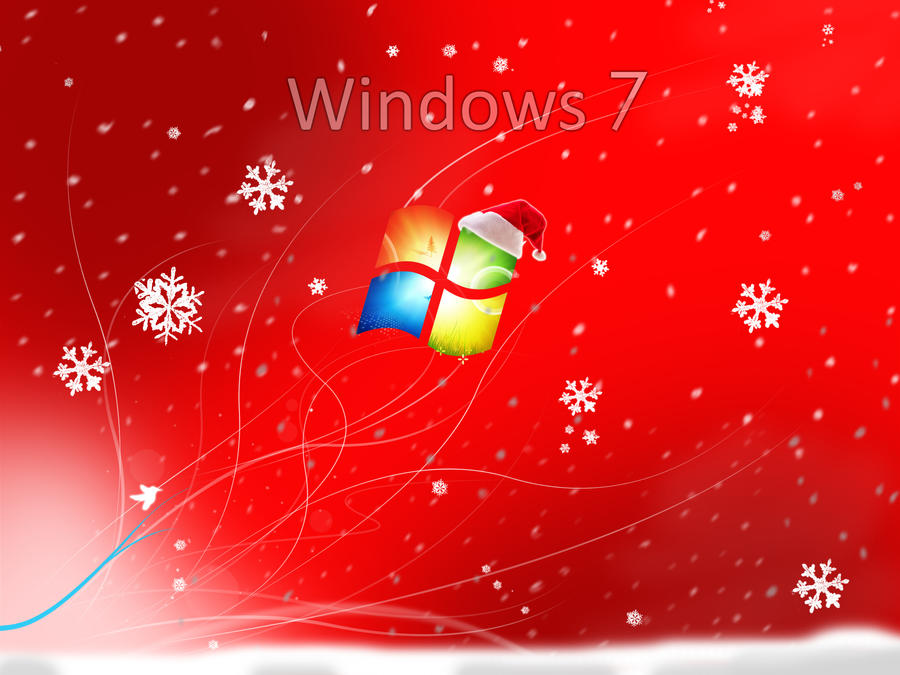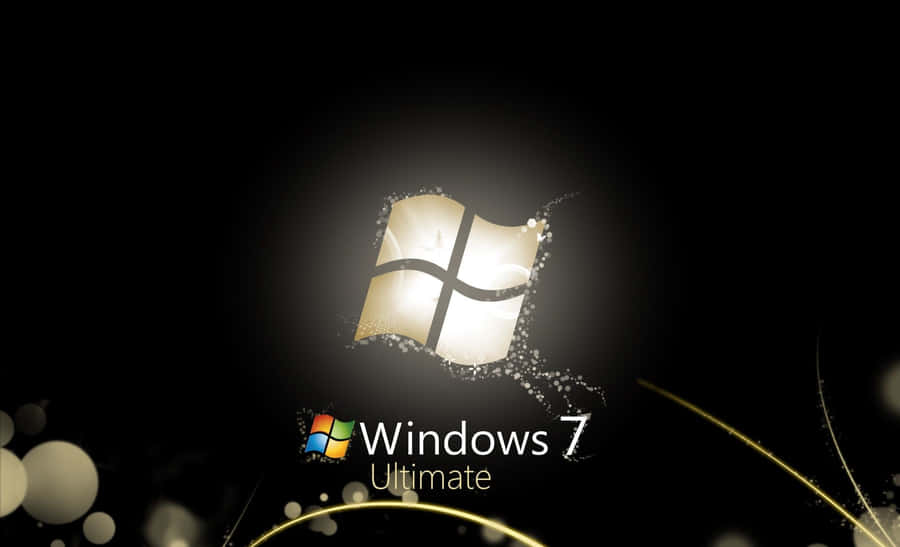Animated Christmas Wallpaper For Windows 7 Biography












nimation is the process through which an image changes over time, and if the interval between the changes is small, then to the human eye the changes appear continuous and give the impression of movement. Some animations may be simple linear changes with time, others may be more complex involving changes that accelerate or decelerate, and some animations are built up of several component movements. All of this can involve some quite complex coding and so to address this challenge Windows 7 provides a component called the Windows Animation Manager.
Using The Windows Animation Manager
Animation can be viewed as a series of frames in a storyboard. Each frame is made up of items and the changes to these items between frames makes up the animation. The changes may be made to the color, position or shape of the items, and the changes may be smooth or discrete, and if smooth, the change could be constant, or the rate of change may increase or decrease. In some cases several properties of an item change. Figure 1 shows a simple storyboard made up of five frames where a red circle changes position on each frame.
Figure 1 Storyboard showing variables and transition
In the terminology of the Windows Animation Manager, these changes are called transitions, and they change a floating point value called a variable. The animation manager does not change pixels on the screen, it just changes the variable, and you have to provide the drawing code that uses the variable. A transition determines how a variable changes over a period of time (called the duration) and the variable will start the transition with an initial value.
Transitions can be chained, that is, one transition describing the change of a variable is followed by another transition describing a different change to the same variable. At the hand over point between the transitions the variable will be changing in a particular way according to the first transition (called the velocity), and since some transitions depend on the velocity this value is made available to the next transition. Figure 2 shows a smooth stop transition and illustrates the initial and final values and the duration of the transition. Other transition types are supported by the Windows Animation Manager—for details see the Storyboard Overview in the Windows Animation Development Guide. The arrows indicate the initial velocity of the transition. Over the duration of the smooth stop transition the variable will decrease from the initial value to the final value.
Figure 2 Illustrating the properties of a smooth stop transition
The animation manager will ensure that the variable’s value changes over the duration in the manner specified, and the application obtains the value of the variable during this time to render each frame. The variable clearly depends on the time since transition started, so the animation manager must have an accurate value of the time the transition starts, and the time when each frame is drawn. Windows provides a high precision timer object that can be used by the animation manager. In addition, Windows also defines several stock transitions through an object called the transition library.
Animation involves more than just changing pixels on a screen. Careful attention must be made to prevent flicker through synchronization with the monitor refresh. Direct2D does this for you, and so the combination of the Windows Animation Manager and Direct2D are the best way to provide animation in a Windows 7-based application.
Creating the Windows Animation Manager
The Windows Animation Manager is a COM object, and it must be created in a single-threaded COM apartment (STA).The thread that will use the animation manager (typically the thread that handles the messages for a window) must be initialized with a call to CoInitialize. Once an application has created an animation manager it can create a storyboard object which encapsulates one or more transitions. Listing 1 shows the code to create the main objects, these objects will be used by all animations and so typically these will be global to the application.
Using The Windows Animation Manager
Animation can be viewed as a series of frames in a storyboard. Each frame is made up of items and the changes to these items between frames makes up the animation. The changes may be made to the color, position or shape of the items, and the changes may be smooth or discrete, and if smooth, the change could be constant, or the rate of change may increase or decrease. In some cases several properties of an item change. Figure 1 shows a simple storyboard made up of five frames where a red circle changes position on each frame.
Figure 1 Storyboard showing variables and transition
In the terminology of the Windows Animation Manager, these changes are called transitions, and they change a floating point value called a variable. The animation manager does not change pixels on the screen, it just changes the variable, and you have to provide the drawing code that uses the variable. A transition determines how a variable changes over a period of time (called the duration) and the variable will start the transition with an initial value.
Transitions can be chained, that is, one transition describing the change of a variable is followed by another transition describing a different change to the same variable. At the hand over point between the transitions the variable will be changing in a particular way according to the first transition (called the velocity), and since some transitions depend on the velocity this value is made available to the next transition. Figure 2 shows a smooth stop transition and illustrates the initial and final values and the duration of the transition. Other transition types are supported by the Windows Animation Manager—for details see the Storyboard Overview in the Windows Animation Development Guide. The arrows indicate the initial velocity of the transition. Over the duration of the smooth stop transition the variable will decrease from the initial value to the final value.
Figure 2 Illustrating the properties of a smooth stop transition
The animation manager will ensure that the variable’s value changes over the duration in the manner specified, and the application obtains the value of the variable during this time to render each frame. The variable clearly depends on the time since transition started, so the animation manager must have an accurate value of the time the transition starts, and the time when each frame is drawn. Windows provides a high precision timer object that can be used by the animation manager. In addition, Windows also defines several stock transitions through an object called the transition library.
Animation involves more than just changing pixels on a screen. Careful attention must be made to prevent flicker through synchronization with the monitor refresh. Direct2D does this for you, and so the combination of the Windows Animation Manager and Direct2D are the best way to provide animation in a Windows 7-based application.
Creating the Windows Animation Manager
The Windows Animation Manager is a COM object, and it must be created in a single-threaded COM apartment (STA).The thread that will use the animation manager (typically the thread that handles the messages for a window) must be initialized with a call to CoInitialize. Once an application has created an animation manager it can create a storyboard object which encapsulates one or more transitions. Listing 1 shows the code to create the main objects, these objects will be used by all animations and so typically these will be global to the application.
When the application starts the animation it creates a storyboard object. The storyboard contains one or more transitions that describe the animation. The transition objects and the storyboard live just for the duration of the animation. If you want to repeat the animation then you have to create a new instance of the storyboard and transitions.
Listing 3 shows the code to create a storyboard object. This object is created through a call to the IUIAnimationManager::CreateStoryboard method that returns a reference to the storyboard object. When you call this method, the animation manager will hold an additional reference to the storyboard for the duration of all the transitions that are part of the storyboard. This is why the code in Listing 3 releases the reference to the storyboard object when the application has finished initializing it.
The storyboard is initialized with one or more transitions, and each transition is related to a specific variable. In Listing 3 the transition library is used to create an accelerate-decelerate transition. The duration of the transition is specified by the second parameter and the variable will have a value of endValue when the transition is complete. The shape of this transition is determined by the third and fourth parameters, the value of accRatio specifies the proportion of the duration spent initially accelerating, and decRatio specifies the proportion of the duration spend decelerating to the final value. This transition object is then added to the storyboard along with the variable that it will change. Adding the transition to the storyboard means that the storyboard holds a reference to the transition object and so once the code has finished initializing the transition it releases its reference. The lifetime of the transition is now controlled by the storyboard object and the lifetime of the storyboard object is controlled by the animation manager.
Listing 3 shows the code to create a storyboard object. This object is created through a call to the IUIAnimationManager::CreateStoryboard method that returns a reference to the storyboard object. When you call this method, the animation manager will hold an additional reference to the storyboard for the duration of all the transitions that are part of the storyboard. This is why the code in Listing 3 releases the reference to the storyboard object when the application has finished initializing it.
The storyboard is initialized with one or more transitions, and each transition is related to a specific variable. In Listing 3 the transition library is used to create an accelerate-decelerate transition. The duration of the transition is specified by the second parameter and the variable will have a value of endValue when the transition is complete. The shape of this transition is determined by the third and fourth parameters, the value of accRatio specifies the proportion of the duration spent initially accelerating, and decRatio specifies the proportion of the duration spend decelerating to the final value. This transition object is then added to the storyboard along with the variable that it will change. Adding the transition to the storyboard means that the storyboard holds a reference to the transition object and so once the code has finished initializing the transition it releases its reference. The lifetime of the transition is now controlled by the storyboard object and the lifetime of the storyboard object is controlled by the animation manager.
Animated Christmas Wallpaper For Windows 7

Animated Christmas Wallpaper For Windows 7

Animated Christmas Wallpaper For Windows 7

Animated Christmas Wallpaper For Windows 7

Animated Christmas Wallpaper For Windows 7

Animated Christmas Wallpaper For Windows 7

Animated Christmas Wallpaper For Windows 7

Animated Christmas Wallpaper For Windows 7

Animated Christmas Wallpaper For Windows 7

Animated Christmas Wallpaper For Windows 7

Animated Christmas Wallpaper For Windows 7

Animated Christmas Wallpaper For Windows 7

Animated Christmas Wallpaper For Windows 7
Animated Wallpapers For Windows 7
3D Desktop - Windows Vista / Windows 7 / Windows XP
Windows 7 Starter (Cambiar Fondo De Escritorio)
3D Desktop - Windows Vista / Windows 7 / Windows XP
Windows 7 Starter (Cambiar Fondo De Escritorio)
No comments:
Post a Comment